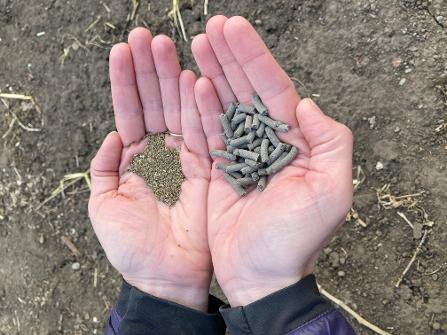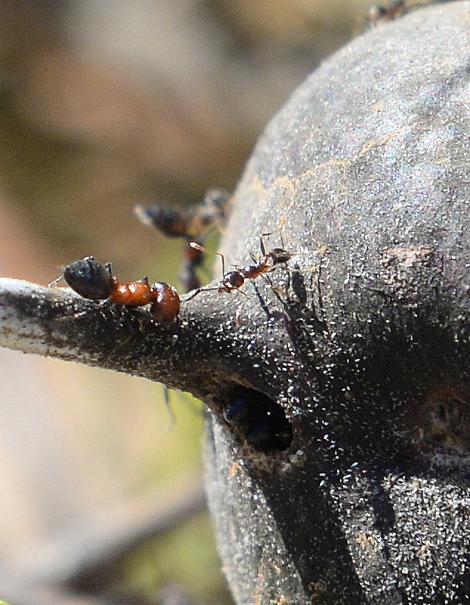
sagebrush restoration
The sagebrush ecosystem covers nearly half of the American West, 150 million acres of land. Yet, this vast ecosystem is rapidly shrinking due to disturbances like mining and energy development as well as invasion by annual grasses (most notably Bromus tectorum, or cheatgrass). Sagebrush is the dominant shrub in this arid ecosystem and essential food and habitat supporting mule deer, pronghorn, sage-grouse and many other species, yet it is slow to recover from disturbances. My team and I have been testing a seed technology approach to sagebrush restoration to see if we can help them get a head start in life.
IMPACTS OF ROADS ON UNGULATES
Large mammals are increasingly inhabiting a landscape altered by roads, fences, habitat changes, and other human activities — with myriad, often negative, consequences. My research aims to understand and mitigate some of these consequences. I work closely with the Wyoming Department of Transportation and the Wyoming Game and Fish Department to ensure that my research results are incorporated into management decisions. For example, through analyzing ungulate-vehicle collision patterns across Wyoming, I have identified the key "hotspots" of collisions and worked with agency and NGO partners to develop a strategic plan for addressing the problem at the worst of these locations. I also lead research testing the effects of various ways to reduce collisions. We tested wildlife warning reflectors and serendipitously found that white canvas worked better! We then tested speed limit reduction and found that it was not effective for reducing wildlife-vehicle collisions; this was an important finding because people often ask why not just reduce the speed limit and there was no good data to support or refute the effectiveness of this measure. Read more about my work on TNC's Cool Green Science blog.
Phenology shifts
The timing of ecological events, or phenology, is important to how species exist and interact with each other. But the timing of many events, such as when plants emerge and flower, when insects emerge, or when migratory birds arrive for the summer, is shifting as the climate warms. By comparing historic and contemporary flowering times for 51 species of forbs in Grand Teton National Park, my colleagues and Ifound that early spring plants are flowering, on average, 17 days earlier now than in the 1970s. We are extending this to other phenological phases and trying to understand longer-term changes and how seeing change can motivate climate action. We run a companion citizen science program called Wildflower Watch and invite participants to help observe the impacts of climate change for themselves.
Mutualism Disruption by invasive ants
In the savannas of East Africa, the widespread whistling-thorn acacia (Vachellia drepanolobium) has a close relationship with several species of native ants. The ants defend the trees against elephants and other browsing herbivores, and the trees give the ants a home and food in the form of sugary nectar. This mutualism prevents elephants and other herbivores from destroying trees. But the invasive big-headed ant (Pheidole megacephala) is threatening this mutualism. This voracious invader attacks and kills off native ants, leaving trees defenseless against herbivores. In places where the invasive ant has established, trees are five times more likely to be killed compared to places where native ants live on the trees. We are piecing together the numerous cascading effects of this mutualism disruption. Trees provide essential shelter for animals, food for browsing herbivores, and influence soil nutrient accumulation. Loss of tree cover could have catastrophic consequences for a variety of species in a region of high conservation value.
